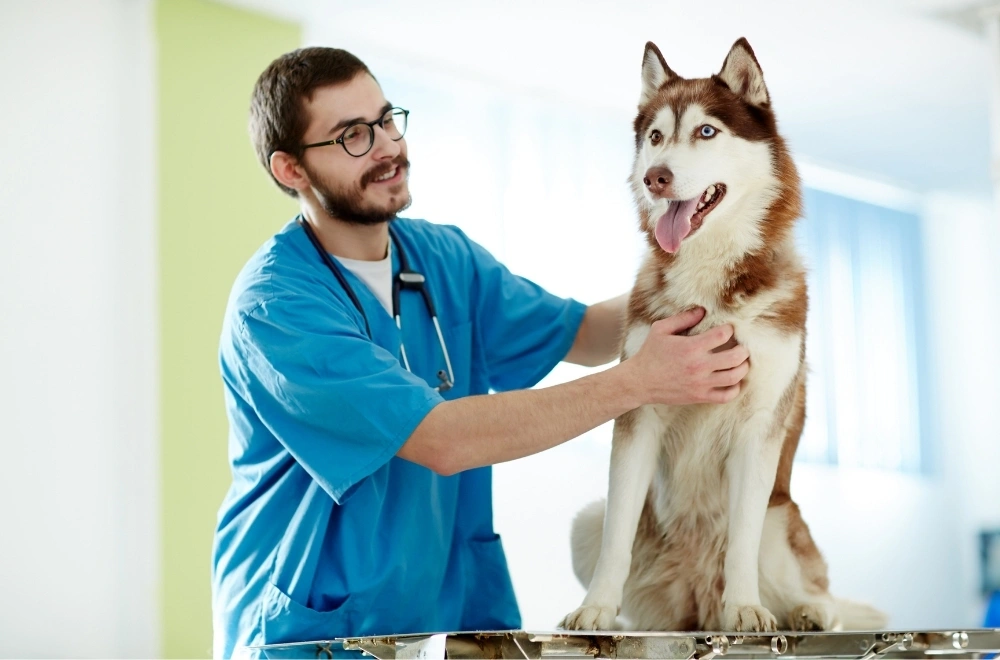Pets bring joy, companionship, and unconditional love into our lives. Whether you have a dog, cat, bird, rabbit, or any other furry (or scaly) friend, their health and well-being should always be a top priority. Just like humans, pets require proper care, nutrition, exercise, and regular medical attention to thrive.
In this article, we’ll explore 10 essential tips to help you keep your pet healthy, happy, and full of life for years to come.
1. Provide a Balanced and Nutritious Diet
A proper diet is the foundation of your pet’s healthy. Different animals have different dietary needs, so it’s important to feed them high-quality food that meets their specific nutritional requirements.
Key Considerations:
- Choose high-quality pet food – Look for brands that use real meat, whole grains, and natural ingredients. Avoid fillers like corn, soy, and artificial additives.
- Follow portion control – Overfeeding can lead to obesity, which increases the risk of diabetes, joint problems, and heart disease.
- Avoid toxic foods – Many human foods are dangerous for pets, including chocolate, grapes, onions, garlic, and xylitol (found in sugar-free gum).
- Consult your vet – If you’re unsure about your pet’s dietary needs, ask your veterinarian for recommendations.
2. Ensure Fresh Water is Always Available
Hydration is just as important for pets as it is for humans. Always provide clean, fresh water for your pet and change it daily.
Tips for Proper Hydration:
- Use a stainless steel or ceramic bowl (plastic can harbor bacteria).
- For cats, consider a water fountain, as many prefer running water.
- Monitor water intake—excessive drinking or lack of thirst can indicate health issues.
3. Regular Exercise and Mental Stimulation
Physical activity keeps pets fit, prevents obesity, and reduces behavioral problems caused by boredom.
Exercise Tips by Pet Type:
- Dogs: Daily walks, fetch, agility training, or dog park visits.
- Cats: Interactive toys, climbing trees, laser pointers, or puzzle feeders.
- Small animals (rabbits, guinea pigs): Safe play areas with tunnels and toys.
- Birds: Flight time outside the cage, foraging toys.
Mental stimulation is equally important—rotate toys, teach new tricks, or use treat-dispensing puzzles to keep their minds sharp.
4. Schedule Regular Veterinary Checkups
Routine vet visits help catch potential healthy issues early.
Recommended Vet Schedule:
- Annual checkups for adult pets.
- Bi-annual visits for senior pets (7+ years).
- Vaccinations as recommended (rabies, distemper, etc.).
- Parasite prevention (fleas, ticks, heartworms).
Don’t wait for symptoms—preventive care saves lives!
5. Maintain Proper Dental Care
Dental disease affects over 80% of pets by age three, leading to pain, infections, and organ damage.
How to Keep Teeth Healthy:
- Brush their teeth 2-3 times a week with pet-safe toothpaste.
- Provide dental chews or toys designed to reduce plaque.
- Schedule professional cleanings if needed.
6. Grooming and Hygiene
Regular grooming keeps your pet clean, comfortable, and free from skin issues.
Grooming Essentials:
- Brushing: Reduces shedding and prevents matting (daily for long-haired pets).
- Bathing: Use pet-friendly shampoo (frequency depends on breed).
- Nail Trimming: Prevents overgrowth and discomfort.
- Ear Cleaning: Prevents infections (especially in floppy-eared dogs).
7. Keep Up with Parasite Prevention
Fleas, ticks, and worms can cause serious healthy problems.
Prevention Methods:
- Monthly flea/tick treatments (topical or oral).
- Heartworm prevention (year-round in some climates).
- Regular deworming (especially for outdoor pets).
Check your pet’s fur and skin regularly for signs of parasites.
8. Provide a Safe and Comfortable Environment
Your pet’s living space should be clean, secure, and stress-free.
Home Safety Tips:
- Pet-proof your home (secure toxic substances, electrical cords, and small objects they could swallow).
- Provide a cozy bed in a quiet area.
- Keep litter boxes clean (for cats).
- Ensure proper ventilation and temperature control (avoid extreme heat or cold).
9. Monitor Behavior and Watch for Warning Signs
Pets can’t tell us when they’re sick, so behavior changes are often the first clue.
Signs of Illness:
- Loss of appetite or excessive thirst
- Lethargy or sudden aggression
- Vomiting, diarrhea, or difficulty breathing
- Excessive scratching or hair loss
If you notice anything unusual, consult your vet immediately.
10. Give Plenty of Love and Attention
Emotional well-being is just as important as physical healthy.
Ways to Strengthen Your Bond:
- Spend quality time daily (cuddles, playtime, training).
- Use positive reinforcement (rewards for good behavior).
- Be patient and understanding—pets thrive on routine and affection.
Final Thoughts
Keeping your pet healthy requires a combination of proper nutrition, exercise, medical care, and love. By following these 10 essential tips, you can ensure your furry (or feathery) friend lives a long, happy, and healthy life.
Remember, preventive care is key—regular vet visits, a balanced diet, and a safe environment will help your pet thrive for years to come.
